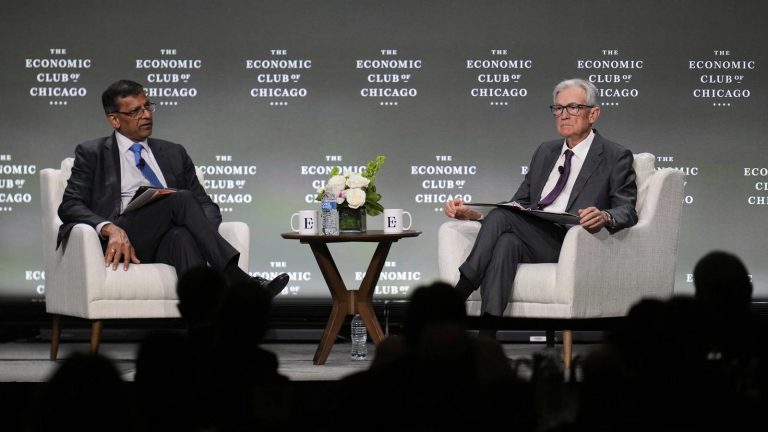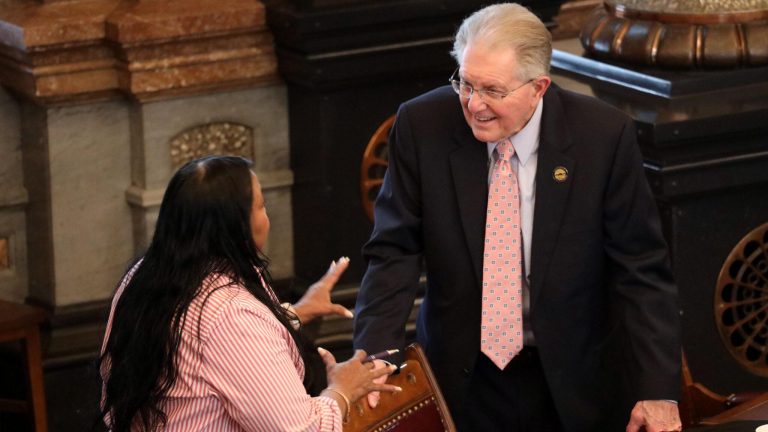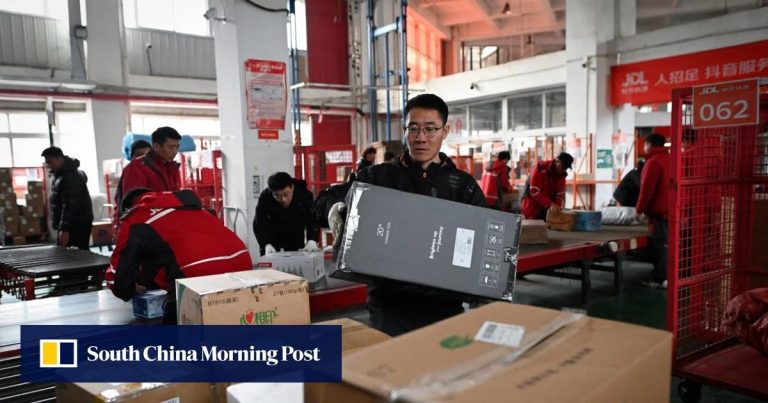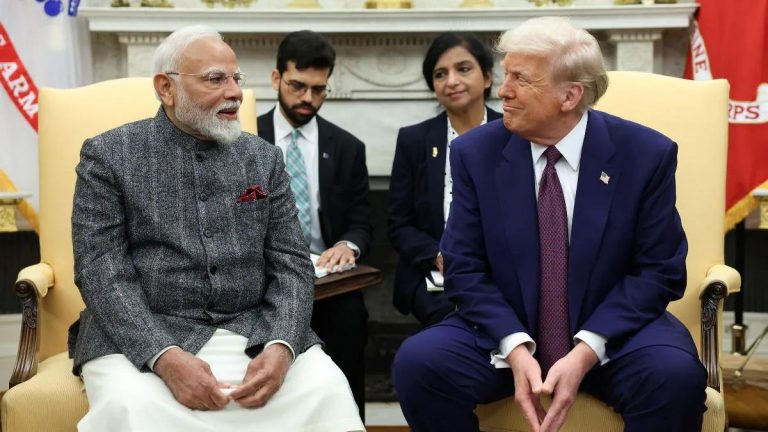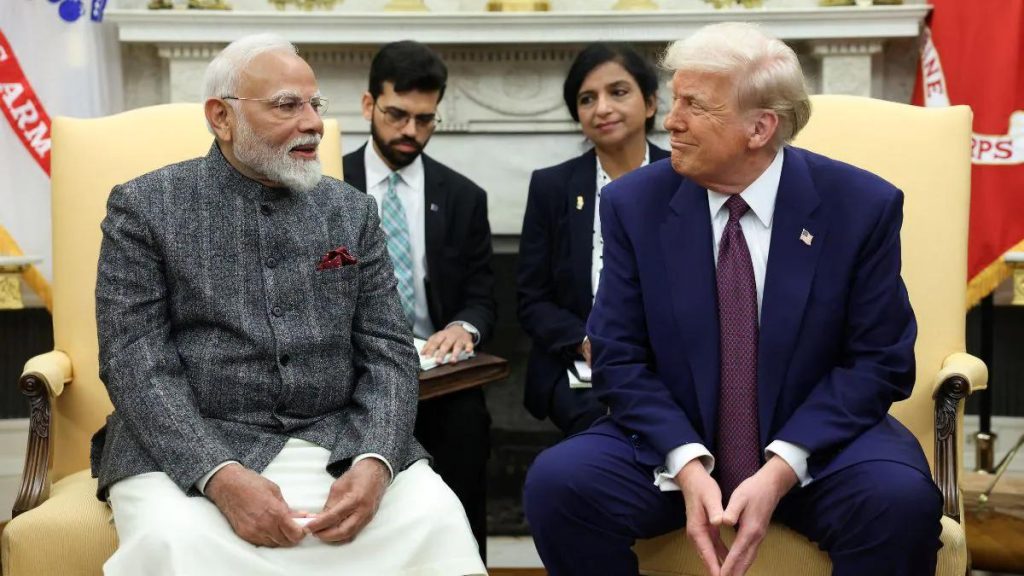
Trump’s Tariff Strategy Shakes Global Trade Landscape | Image Source: www.firstpost.com
WASHINGTON, D.C., 15 April 2025 – A new phase of world trade began as the Trump administration progressed with a radical tariff policy targeting the world’s 15 largest economies. Treasury Secretary Scott Bessent confirmed this strategic approach at a press conference with President Donald Trump and Italian Prime Minister Giorgia Meloni, who attracted international attention and speculation. The announcement follows a chaotic deployment of “reciprocal” tariffs, some of which were promulgated and subsequently stopped in hours, which underscores the intention of an administration to intensify trade relations on its own terms.
According to Newsweek, the 90-day tariff break in the administration, in effect until 9 July, aims to create a window for countries to negotiate new trade terms. Although tariffs on China remain firmly in place and have even increased, the United States gives priority to agreements with India, Japan, South Korea, the United Kingdom and Australia. This is part of what Bessent calls the “big 15”, a reference to the world’s largest economies for GDP, which collectively make up the majority of world trade. However, the exclusion of some, such as Taiwan, raised eyebrows and raised questions about the underlying political and strategic motivations.
What’s Big 15 strategy and why now?
The term “15” refers to the world’s largest economies, including the United States, China, Japan, Germany, India, the United Kingdom, France, Italy, Brazil, Canada, Russia, South Korea, Australia, Spain and Mexico. These countries jointly dominate international trade, represent most foreign direct investment flows and have a significant impact on world GDP. By pointing out this group, the Trump administration underlines its intention to reformulate the rules of world trade and restore the balance of US imports and exports through hard bilateral online negotiations rather than multilateral agreements.
But why now? Analysts suggest that the administration uses the average year of elections as an opportunity to show a difficult position in trade, a key pillar of the Trump 2016 and 2020 campaigns. On the other hand, this initiative aims to “recover the lost leverage” after previous tariffs have not prevented countries such as China from taking reprisals. According to The Daily Telegraph, this last round of tariff diplomacy is both strategic and symbolic, designed to project economic strength and nationalism before the November elections.
What are the first online countries for trade agreements?
According to Firstpost and other sources, the countries at the forefront of the negotiations are India, Japan, South Korea, the United Kingdom and Australia. These savings have already participated in preliminary talks or are planned for meetings with Secretary Bessent in the coming weeks. South Korea, for example, confirmed that Deputy Prime Minister Choi will meet with US officials next week to discuss trade issues. The White House would be optimal to conclude agreements with these countries within two to three weeks.
India, which initially slapped at 26 per cent, remained relatively calm but proactive. As Piyush Goyal, trade union minister, said in an interview with Firstpost, India has already participated in bilateral trade negotiations before tariff taxation, and hopes that the final agreement will be reached in the fall. Japan and South Korea, affected by tariffs – 24 per cent and 26 per cent respectively – responded by accelerating discussions, emphasizing their strategic interest in maintaining stable trade ties with the United States.
What is the state of the US tariff war – China?
Unlike the other countries of the “Grand 15”, China remains locked in a tariff title that shows no sign of resolution. Last week, President Trump increased Chinese import duties from 104% to 125% surprisingly after China imposed an 84% retaliatory charge. In total, US duties on Chinese goods now amount to 145%. In response, China introduced a 125% U.S. import tariff and limited the export of key raw materials, including rare terrestrial elements essential for advanced manufacturing.
Chinese Foreign Ministry spokesman Lin Jian did not lie saying: “The tariff and trade wars have no winners. China does not want to fight these wars, but it is not afraid. »
His remarks underline Beijing’s firm stance and suggest that a breakthrough is unlikely unless the U.S. backs down significantly. Yet, Trump has made it clear he is in no rush to strike a deal with China, stating during the press conference:
“We take a lot of money. What we have never done before.”
Why was Taiwan excluded from the priority talks?
Taiwan’s exclusion from high-level negotiations, despite the postponement of a 32 per cent tariff, led to speculation about the political sub-current of Trump’s trade agenda. As stated in the Wall Street Journal, Treasury Secretary Bessent gives priority to the United Kingdom, Australia, South Korea, India and Japan, leaving Taiwan to make the imminent tariffs without immediate recourse. This raised concerns in Taipei, where officials feel remote despite Taiwan’s important economic ties with the United States, particularly in semiconductors and high-tech industries.
Some analysts see Taiwan’s exclusion as an effort to avoid exacerbating China, given growing geopolitical tensions throughout the Taiwan Strait. Others believe that it can simply reflect a strategic priority based on trade volume and political capital. In any event, Taiwan’s absence in the early negotiations introduces another variable into an already unstable landscape.
How do European leaders react?
The visit of Italian Prime Minister Giorgia Meloni marked the first face-to-face between a European leader and Trump since the 20% EU export duties were announced earlier this month. During the Oval Office briefing, he gave a hopeful tone: “I’m sure we can make a deal. I’m here to help you.”
Her comment underscores the broader European interest in mitigating the effects of Trump’s protectionist approach.
EU members – four of whom are part of the “Grands 15” – rebalance their strategy, with Brussels seeking to present a unified front. While Germany and France have been more critical, countries like Italy and Spain seem more inclined to engage in pragmatic dialogue. The EU’s retaliatory rights remain in place, and while the White House extends the pause for European countries, it remains uncertain.
What are the real economic blows?
Rates may seem abstract, but their impact is less. For American businesses and consumers, the effects of the wave are already visible: increasing import costs, shrinking supply chains and increasing uncertainty. According to industry experts, sectors such as automotive, electronics and agriculture are among the most affected. Meanwhile, exporters from countries such as India and South Korea are struggling to renegotiate contracts under imminent threat of double-digit tariffs.
Moreover, Trump’s unpredictability of trade policy, seen in the sudden imposition and payment of tariffs, has allowed companies to fight to plan. According to Newsweek, the administration’s mercurial approach has increased market volatility, discouraged foreign investment and intensified inflationary pressures. Small and medium-sized enterprises, which lack the resources to cope with sudden regulatory changes, are particularly vulnerable.
Where are we going?
The next few weeks will be crucial. With the 9 July deadline, countries are in a hurry to conclude agreements before risking permanent taxes. The United States seems ready to announce trade agreements with India, Japan and South Korea at the end of the month, followed by a possible agreement with the United Kingdom in early May. As stated by a White House official in The Daily Telegraph, the agreement with India is likely to be the first to be concluded, due to pre-existing bilateral talks.
But the question remains broader: is this aggressive bilateralism sustainable? While some argue that it gives the United States more advantage, others warn that it risks alienating allies and breaking the global trading system. The World Trade Organization is largely marginalized, and as countries are forced to conduct single negotiations, the multilateral order based on rules that have governed trade for decades could still be eroded.
Finally, Trump’s pricing strategy reflects a broader ideological shift away from globalization and towards economic nationalism. It remains to be seen whether this strategy will produce long-term or late benefits. But one thing is clear: the rules of world trade are rewritten, and bets have never been higher.
